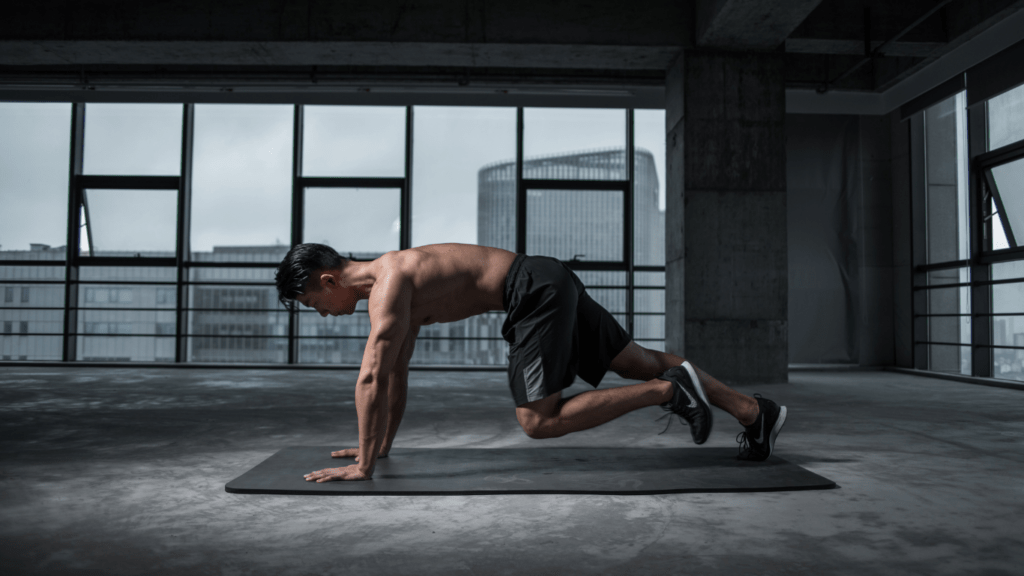Understanding Pro Athlete Fitness Levels
Professional athletes perform at exceptional fitness levels, requiring more than daily workouts to achieve. Their training incorporates a scientific approach to maximize physical capabilities. Pro athletes focus on multiple fitness dimensions: strength, endurance, flexibility, and mental toughness.
Strength Training
Strength forms the foundation of athletic performance. Pro athletes use resistance training to build muscle and enhance power. Routine examples include weightlifting, bodyweight exercises, and plyometric drills. This regimen aids in muscle growth and boosts overall performance.
Endurance Conditioning
Endurance enables athletes to sustain high-level performance over extended periods. Cardiovascular training, such as running, cycling, and swimming, is integral. These activities improve heart health, increase stamina, and support recovery.
Flexibility and Mobility
Flexibility reduces injury risk and improves movement efficiency. Pro athletes incorporate yoga, stretching routines, and dynamic warm-ups into their training. These practices enhance joint mobility and contribute to overall athletic performance.
Mental Toughness
Mental toughness distinguishes elite athletes. Techniques like visualization, meditation, and goal setting foster resilience and focus. These strategies help athletes overcome challenges and maintain peak performance under pressure.
Nutrition and Recovery
Proper nutrition fuels athletic performance. A balanced diet, rich in proteins, carbohydrates, and healthy fats, supports training demands. Recovery strategies, including sleep and active rest, aid muscle repair and prevent burnout.
By understanding these components, anyone can approach fitness like a pro athlete. The blend of strength, endurance, flexibility, mental toughness, and nutrition forms the bedrock of elite athleticism.
Essential Components of Pro Athlete Training
Pro athletes use a comprehensive approach to maintain peak fitness. Their training regimes include elements that ensure balanced development.
Strength Training Techniques
Strength training is vital for athletes to enhance muscle power and endurance. They use compound movements, including squats, deadlifts, and bench presses, to target multiple muscle groups efficiently. Isolation exercises, like bicep curls and tricep extensions, refine specific areas. Athletes also incorporate plyometrics, such as box jumps and clap push-ups, to develop explosive strength. Consistency and progression in weight and intensity are key elements.
Cardiovascular Workouts
Cardiovascular workouts build endurance and improve aerobic capacity. High-intensity interval training (HIIT) alternates short bursts of intense activity with rest periods, maximizing efficiency. Endurance athletes often use steady-state cardio, like long-distance running or cycling, to sustain heart health. Cross-training, mixing different cardio exercises, such as rowing, swimming, and running, prevents overuse injuries and ensures comprehensive cardiovascular fitness.
Flexibility and Mobility Exercises
Flexibility and mobility exercises prevent injuries and enhance range of motion. Dynamic stretching, involving controlled movements through the full range of motion, is often part of a warm-up. Static stretching, holding stretches for 15-60 seconds, aids in muscle recovery post-training. Practices like yoga and Pilates focus on core strength, balance, and overall flexibility, complementing other training elements effectively.
Nutrition and Diet for Peak Performance

Professional athletes depend on meticulous nutrition plans to fuel their bodies and enhance performance. I’ll break down key elements of these plans.
Macronutrient Breakdown
Athletes need a balanced intake of macronutrients to sustain energy and build muscle. I focus on:
- Proteins: Essential for muscle repair and growth, athletes consume lean meats, fish, eggs, and plant-based options like beans and lentils.
- Carbohydrates: Primary energy source; I opt for complex carbs such as whole grains, fruits, and vegetables.
- Fats: Important for energy and hormone production; healthy fats come from sources like avocados, nuts, seeds, and olive oil.
Hydration Strategies
Staying hydrated is critical for optimal performance. Here’s how I manage hydration:
- Pre-Workout: Consuming 16-20 ounces of water 2 hours before exercise ensures hydration.
- During Workout: Drinking 7-10 ounces every 20 minutes keeps the body balanced.
- Post-Workout: Replenishing lost fluids with 20-24 ounces of water for each pound lost during exercise aids recovery.
Key Supplements
Supplements can bridge nutritional gaps. I usually consider:
- Protein Powder: Helps meet daily protein requirements, supporting muscle synthesis.
- Creatine: Boosts strength and power during high-intensity activities.
- Multivitamins: Ensures essential vitamins and minerals intake.
- Omega-3 Fatty Acids: Reduces inflammation and supports cardiovascular health.
These nutritional strategies can elevate fitness levels and mirror pro athlete regimes.
Mental Toughness and Focus
Maintaining mental toughness and focus is crucial for achieving peak athletic performance. These qualities help athletes stay disciplined and resilient under pressure.
Goal Setting
Setting clear, measurable goals is vital for tracking progress and staying motivated. I suggest breaking long-term objectives into smaller, actionable tasks to make them more achievable. For example, if the aim is to run a marathon, set incremental milestones like running 5, 10, and 15 miles. Tracking these milestones helps build confidence and keeps motivation high.
Stress Management
Effective stress management techniques can improve focus and reduce burnout. I find that practices like mindfulness meditation, deep breathing exercises, and adequate sleep are essential. Mindfulness meditation involves staying present and focused on the moment. Deep breathing exercises can quickly reduce stress levels. Ensuring 7-9 hours of sleep each night promotes mental and physical recovery, which is essential for maintaining peak performance.
Visualization Techniques
Visualization techniques can enhance mental preparedness and boost performance. This involves mentally rehearsing specific actions or entire events to create neural patterns in the brain. For instance, visualizing crossing the finish line of a race or successfully executing a complex play can prepare the mind and body for the actual event. Incorporating visualization into daily practice routines helps reinforce positive outcomes and reduce anxiety.
Recovery and Injury Prevention
How professional athletes manage recovery and injury prevention plays a vital role in their ability to maintain optimal performance. I’ll share critical strategies for incorporating these practices into your fitness routine.
Importance of Rest Days
Rest days allow muscles to repair, rebuild, and strengthen. Without adequate rest, cumulative fatigue hinders performance and increases injury risk. Athletes often schedule one or two rest days per week; for example, light activities like walking or gentle stretching improve circulation without adding strain.
Effective Recovery Methods
Adopting effective recovery methods enhances muscle recovery and reduces soreness. Ice baths and contrast water therapy, alternating between hot and cold water, alleviate muscle fatigue. Compression garments, such as socks and sleeves, reduce swelling and improve circulation. Massage therapy, using techniques like deep tissue and sports massage, alleviates tension and promotes recovery.
Common Injury Prevention Practices
Injury prevention includes warming up and cooling down, using dynamic stretches pre-workout and static stretches post-workout. Strengthening stabilizer muscles, particularly around the joints, ensures better support and reduces the risk of injury. Proper technique during exercises mitigates undue stress on muscles and joints. Finally, incorporating cross-training ensures balanced muscle development and prevents overuse injuries common in repetitive activities.


 Michaello Thomasters, the visionary founder of Bet Roll Gamble, has built a dynamic platform that serves as a hub for betting enthusiasts across various arenas, including sports, poker, horse racing, and esports. With a passion for providing valuable insights and strategies, Thomasters aimed to create a space where both novice and experienced bettors can enhance their skills and stay ahead of trends.
Michaello Thomasters, the visionary founder of Bet Roll Gamble, has built a dynamic platform that serves as a hub for betting enthusiasts across various arenas, including sports, poker, horse racing, and esports. With a passion for providing valuable insights and strategies, Thomasters aimed to create a space where both novice and experienced bettors can enhance their skills and stay ahead of trends.